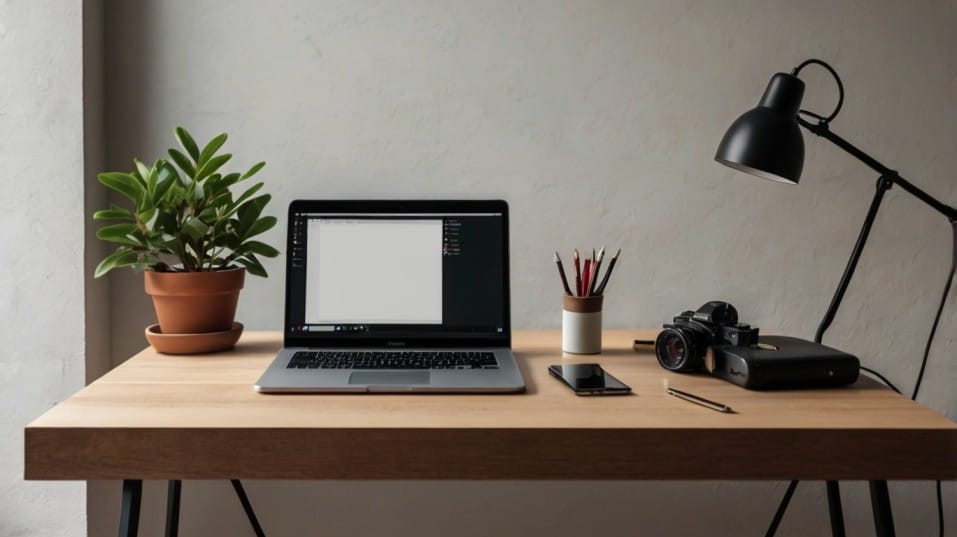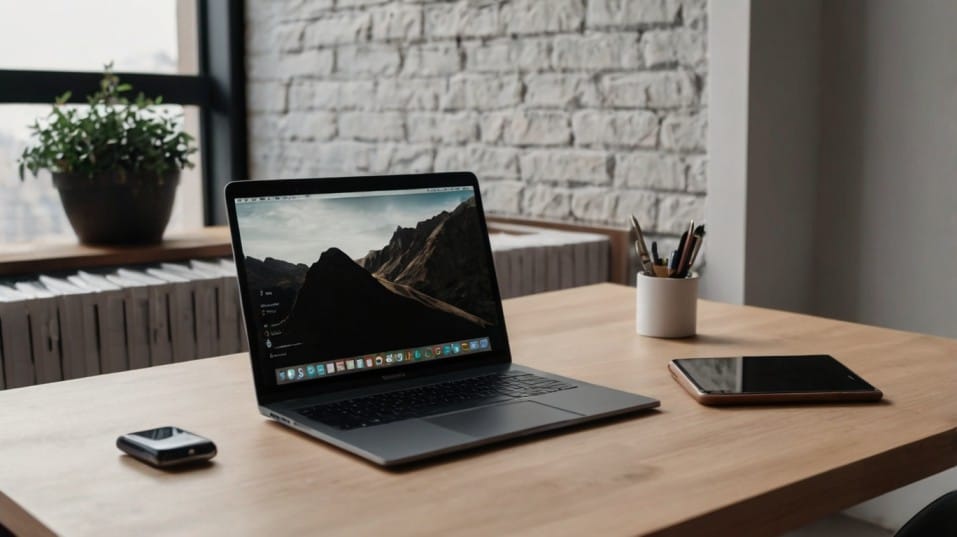Why Digital Minimalism is Key to Mental Clarity
Discover why digital minimalism is key to mental clarity. Learn strategies to reduce distractions, improve focus, and reclaim cognitive space.

Are your digital habits quietly eroding your focus? The constant influx of notifications, emails, and social feeds doesn’t just steal time—it reshapes brain function, weakens attention, and fuels stress.
Instead of helping you stay connected, digital clutter traps you in a cycle of distraction, making deep work feel impossible. The solution isn’t unplugging completely but reshaping your relationship with technology.
By adopting digital minimalism, you can reclaim clarity, improve cognitive resilience, and work with sharper focus.
The Science of Digital Overload
Excessive digital consumption rewires the brain in ways that undermine focus, decision-making, and emotional regulation. Neuroscience highlights the impact:
- Task-switching lowers efficiency by up to 40%, making even simple projects take longer.
- Notifications overstimulate the amygdala, increasing cortisol levels and triggering stress responses.
- Chronic digital multitasking weakens sustained attention, making deep work feel almost impossible.

- Overuse of screens, especially late at night, disrupts melatonin production, reducing sleep quality and impairing cognitive function.
- Dopamine-driven feedback loops in social media and instant messaging make disengagement increasingly difficult, trapping users in a cycle of compulsive checking.
When digital inputs overwhelm the brain, mental fatigue sets in, reducing cognitive sharpness.
Implementing digital minimalism isn’t just about cutting screen time—it’s about rewiring your relationship with technology to foster better mental performance.
Restructuring Digital Habits for Clarity
Breaking free from digital overload isn’t just about limiting screen time—it’s about creating intentional habits that support focus and mental well-being.
Small changes in how you interact with technology can lead to a clearer mind and a more productive workflow.
Declutter Digital Spaces
A cluttered digital environment breeds cognitive chaos. Cleaning up your digital world creates instant mental relief.
Unsubscribe from emails you never open, delete redundant apps, and organize digital files. A streamlined workspace fosters clearer thinking and reduces unnecessary friction throughout the day.
Beyond just your inbox and apps, look at hidden digital clutter: Are you hoarding unnecessary browser bookmarks?
Are your cloud storage folders chaotic and disorganized? Tackling these areas can help create a cleaner, more efficient workflow.
Set Stronger Boundaries with Technology
The real issue isn’t technology itself but the lack of control over its use. Designate clear boundaries to prevent tech from dictating your attention:
- Silence non-essential notifications to reduce constant interruptions.
- Use "Do Not Disturb" during deep work sessions to maintain focus.
- Set scheduled check-in times for email and social media instead of mindless scrolling.
- Keep your phone out of reach during work sessions to avoid impulse checking.
- Establish ‘tech-free zones’—perhaps the bedroom, dining table, or certain meeting spaces—to create separation between digital and offline life.
These small but impactful shifts reclaim mental bandwidth and curb digital overwhelm.
Implement Screen-Free Resets
Long hours of screen exposure strain cognitive resources, reducing creativity and problem-solving ability. Introducing intentional screen-free moments lets the brain reset.
Try starting your day tech-free for 30 minutes, taking a device-free lunch break, or disconnecting an hour before bed to improve sleep quality.
For deeper resets, consider:
- A weekly digital detox day where screens are minimized or eliminated altogether.
- Replacing digital habits with physical alternatives—reading a print book instead of scrolling, journaling instead of texting, or taking handwritten notes instead of typing.
- Spending time in nature without any devices, allowing your brain to decompress and reset naturally.
Shift to Mindful Digital Consumption
Mindless scrolling drains mental energy without adding value. Instead of passively consuming digital content, refine your habits:
- Keep only essential tabs open to avoid context-switching fatigue.
- Follow the 80/20 rule—consume content that genuinely benefits your growth.
- Curate a media diet that aligns with your goals rather than floods your mind with noise.
- Unfollow accounts, newsletters, and subscriptions that no longer serve a purpose.
- Reduce exposure to doomscrolling and sensationalist news, which contributes to unnecessary stress and distraction.
When digital engagement becomes intentional, cognitive clarity improves.
Leverage Technology for Focus Instead of Distraction
Technology isn’t inherently the problem—it’s how we interact with it. Instead of letting digital tools control you, repurpose them for mindfulness and efficiency:
- Set app time limits to prevent excessive social media scrolling.
- Use focus apps like Freedom or Forest to block distractions during deep work.
- Switch your phone to grayscale mode to reduce its visual appeal.
- Implement website blockers to prevent mindless browsing during work hours.
- Use calendar scheduling to batch digital interactions—grouping emails, messages, and online meetings into designated blocks instead of responding throughout the day.
By taking control of technology instead of letting it control you, digital minimalism becomes a tool for focus, not frustration.
Overcoming Resistance to Digital Minimalism
Change isn’t easy, and digital habits are deeply ingrained. Common concerns include:
“I need my devices for work.” Rather than complete disconnection, establish digital boundaries. Designate work-only digital spaces separate from personal use to prevent tech from spilling into every aspect of life.
Use separate devices if possible, or at least create different profiles for work and personal use.
“I feel disconnected without my phone.” Instead of reaching for a screen, replace digital habits with offline activities that enhance well-being.
Prioritize face-to-face interactions, physical movement, or creative pursuits. Strengthen real-world connections by making social plans that don’t rely on digital engagement.
“I keep slipping back into old patterns.” Accountability strengthens discipline. Use tracking tools to monitor screen time, periodically review digital habits, and adjust strategies as needed.
Consider an accountability partner or coach to help reinforce new behaviors.
“I’m afraid I’ll miss out on important updates.” Fear of missing out (FOMO) is a major obstacle to digital minimalism. Combat it by defining what is truly essential.
If an update is urgent, you’ll hear about it through direct channels, not by constantly refreshing social feeds. Set up email filters to prioritize critical communications while keeping distractions at bay.
Final Thoughts: Start Now
Digital minimalism isn’t about rejecting technology—it’s about using it with intention. By reducing digital noise, professionals can reclaim their focus, sharpen decision-making, and create space for deeper, more meaningful work.
Start small: Declutter one digital space today. Turn off one unnecessary notification. Take a mindful break from screens. The benefits compound, leading to a sharper mind, reduced stress, and a more balanced work-life experience.
If digital clutter has been draining your energy, now is the time to reset. Choose one strategy, apply it today, and start reclaiming your focus—one mindful step at a time.




